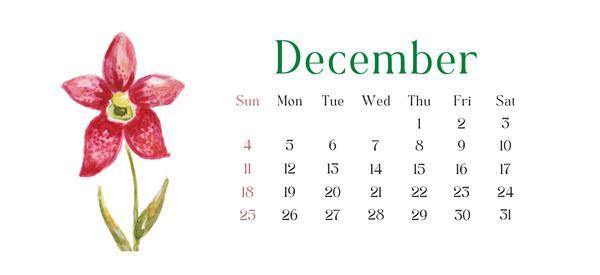
Foraging Calendar: What to Forage in December
Why pay for what you can get for free? Nature has so much to offer.. even in December.
In the Northern hemisphere, the snow and cold weather may deter you from foraging. But even underneath all the frost, there are still natural goodies and holistic medicine waiting to be discovered.
The USDA Hardiness zone Map is an attempt to divide the country into zones that give us some idea whether certain plants can be grown in any given area. The primary piece of data used to delineate the zones is the average annual winter temperature experienced in that area. This could just be a list of forageables, but the temperature varies so much across the USA. The Lost Herbs wants this to be a list for every one of our readers, no matter the zone or region you live in.
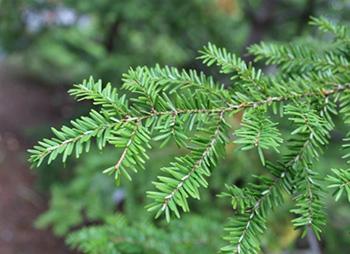 Hemlock (Tsuga) needles have 2 white “racing stripes” on the underside. Conical to egg-shaped branches give this tree a lacier appearance than spruce, fir, or pine. Twigs with many needles are used in tea to treat kidney ailments. Used in tea to treat colds, fevers, diarrhea, coughs, and scurvy.
Hemlock (Tsuga) needles have 2 white “racing stripes” on the underside. Conical to egg-shaped branches give this tree a lacier appearance than spruce, fir, or pine. Twigs with many needles are used in tea to treat kidney ailments. Used in tea to treat colds, fevers, diarrhea, coughs, and scurvy.
Hemlock trees grow in hardiness zones 3-7 in the Northeastern United States.
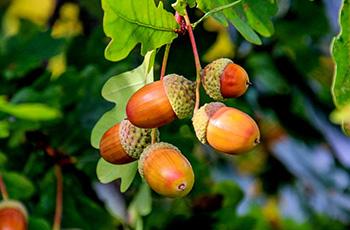 Acorns (Quercus) woody cups may be scaly, smooth, or hairy. Acorns are usually ball-shaped or oval, and some kinds have slight ridges on them. Mature acorns can be brown, red, or black. Acorns grow on Oak trees, look for bark that has deep fissures and ridges, giving it a scaly look. The bark color of oaks ranges from whitish-gray to dark, almost black.
Acorns (Quercus) woody cups may be scaly, smooth, or hairy. Acorns are usually ball-shaped or oval, and some kinds have slight ridges on them. Mature acorns can be brown, red, or black. Acorns grow on Oak trees, look for bark that has deep fissures and ridges, giving it a scaly look. The bark color of oaks ranges from whitish-gray to dark, almost black.
You can identify oak trees by their deeply lobed leaves with pointed or rounded tips. Acorns can be ground to make flour, which can make baked goods such as bread or cookies. They grow in hardiness zones 5-8 and across all U.S. regions.
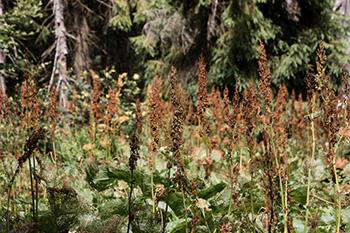 Dock (Rumex) has a small, thin sheath that covers the base of each leaf. This is called the ocrea, and it turns brown as the plant ages. Dock plants form rosettes of large oval green leaves with distinct midribs. Broadleaf dock leaves are flat, while curled dock has curly-edged leaves. Dock seeds can be ground up for flour while the leaves can be used to treat Nettle stings.
Dock (Rumex) has a small, thin sheath that covers the base of each leaf. This is called the ocrea, and it turns brown as the plant ages. Dock plants form rosettes of large oval green leaves with distinct midribs. Broadleaf dock leaves are flat, while curled dock has curly-edged leaves. Dock seeds can be ground up for flour while the leaves can be used to treat Nettle stings.
Dock grows in hardiness zones 4-8 and across the United States into southern Canada.
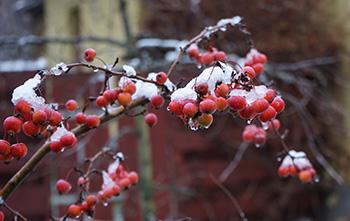 Hawthorn (Crataegus monogyna): While the flower and fruit has fallen from the Hawthorn tree by this point in the year the leaves still have wonderful medicinal properties. Hawthorn is used to helping protect against heart disease and help control high blood pressure and high cholesterol.
Hawthorn (Crataegus monogyna): While the flower and fruit has fallen from the Hawthorn tree by this point in the year the leaves still have wonderful medicinal properties. Hawthorn is used to helping protect against heart disease and help control high blood pressure and high cholesterol.
You can use the leaves to make a holistic tea. Thorny, deciduous small tree or shrub, 6 to 30 feet tall. Leaves 3 to 7-lobed, 1-2 inches long, and nearly as broad, resemble mittens or paws. Hawthorn Trees grow in hardiness zones 5-9 and across the United States.
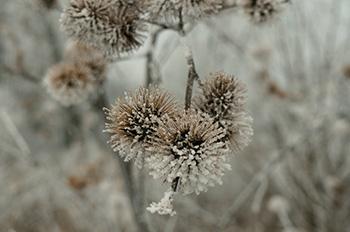 Burdock (Arctium minus) is a thistle and is often confused with Bull (Cirsium vulgare) and Milk (Silybum marianum) thistle. The easiest way to tell if the plant you found is burdock is if the stem and leaves do not have spines. Burdock roots are used in teas to treat many ailments of the common cold.
Burdock (Arctium minus) is a thistle and is often confused with Bull (Cirsium vulgare) and Milk (Silybum marianum) thistle. The easiest way to tell if the plant you found is burdock is if the stem and leaves do not have spines. Burdock roots are used in teas to treat many ailments of the common cold.
The root can be eaten like any root vegetable, it’s filled with fiber great for your digestional tract. Burdock can be found in hardiness zones 2-11 and across the United States.
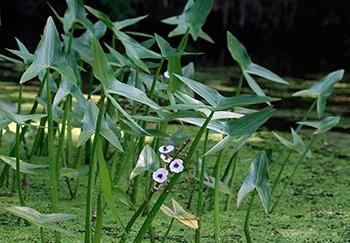 Duck potatoes (Sagittaria latifolia) or arrowhead is a colony-forming, aquatic perennial, rising above water level to a height of 3 ft. The long-petioled, emergent leaves are arrowhead-shaped. Flowers have showy, white petals and are arranged in a whorled raceme.
Duck potatoes (Sagittaria latifolia) or arrowhead is a colony-forming, aquatic perennial, rising above water level to a height of 3 ft. The long-petioled, emergent leaves are arrowhead-shaped. Flowers have showy, white petals and are arranged in a whorled raceme.
The root can be used like potatoes.
They can also be dried and ground into powder for soups and bread. Duck potatoes were also the meals for Lewis and Clark on their famous expedition. Duck potatoes are found in hardiness zone 4-11 and the Southeastern United States.
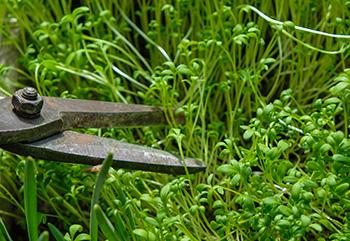 Watercress (Nasturtium officinale) grows 4 to 10 inches high. The leaves alternate, pinnately compound leaves can be from about 1.5 inches to 6.5 inches long and consist of 2 to 8 nearly oval-shaped leaflets arranged in opposite pairs with one larger leaflet on the end.
Watercress (Nasturtium officinale) grows 4 to 10 inches high. The leaves alternate, pinnately compound leaves can be from about 1.5 inches to 6.5 inches long and consist of 2 to 8 nearly oval-shaped leaflets arranged in opposite pairs with one larger leaflet on the end.
The leaflet edges are wavy.
Watercress can be used in salads, sauteed, or in smoothies. Watercress grows in hardiness zones 3-11 on the western coast and eastern coast of the United States.
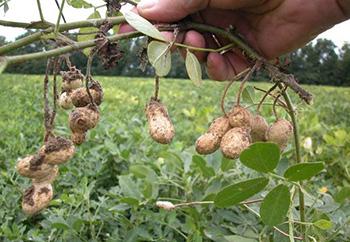 Groundnuts (Arachis hypogaea) has oblong pods have rounded ends and are most commonly long with two or three seeds; the pods are contracted between the seeds and have a thin, netted, spongy shell.
Groundnuts (Arachis hypogaea) has oblong pods have rounded ends and are most commonly long with two or three seeds; the pods are contracted between the seeds and have a thin, netted, spongy shell.
The seeds vary from oblong to nearly round and have a papery seed coat that ranges in color from whitish to dark purple.
Groundnut seed can be consumed raw, boiled, and roasted and also used to make confections and flour to make baked products. Groundnuts grow in hardiness zones 6-11 in the Southeastern United States.
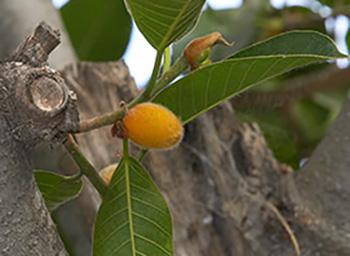 Mysore fig (Ficus drupacea) is a strangler fig with a large canopy. The leaf blade is obovate-elliptic, with a rounded base.
Mysore fig (Ficus drupacea) is a strangler fig with a large canopy. The leaf blade is obovate-elliptic, with a rounded base.
The leaves and the stalk are densely covered with yellowish-brown velvety hairs. Figs are large, conic-ellipsoid, densely covered with brownish-yellow long hairs. The figs are edible but don’t have much taste, they are mostly used for juice and jams.
Mysore fig grows in hardiness zones 9-11 in the Southeastern United States.
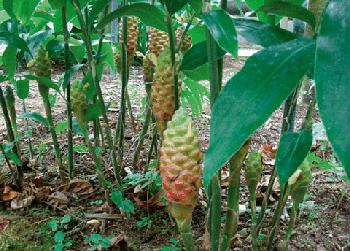 Plai (Zingiber cassumunar) is a unique plant. In the ginger family, the root and many other parts of the plant has medicinal properties. It is often used in holistic massage oils.
Plai (Zingiber cassumunar) is a unique plant. In the ginger family, the root and many other parts of the plant has medicinal properties. It is often used in holistic massage oils.
The plant has a unique flower that looks like a pink or red upside-down pinecone.
Plai grows in hardiness zones 8-12 in the Southeastern regions of the United States.
While all of these are located in America, we don’t want to leave our overseas readers out of the loop.
Countries like Canada and Australia are also abundant with delicious plants.
Canada’s weather aligns more with the United States and many of the plants above can grow in Canada’s ecosystem. Canadians can use the hardiness zones to apply to their regions.
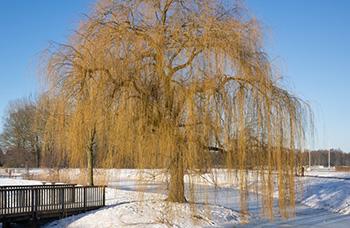 Willow Tree (Salix alba) narrow leaves are light green on top, with silvery undersides until they turn yellow in autumn. The bark is rough, gray, and ridged. While the leaves have dropped the bark still can be used in tea for pain relief and other inflammatory illnesses. Willow trees grow in hardiness zones 4-10.
Willow Tree (Salix alba) narrow leaves are light green on top, with silvery undersides until they turn yellow in autumn. The bark is rough, gray, and ridged. While the leaves have dropped the bark still can be used in tea for pain relief and other inflammatory illnesses. Willow trees grow in hardiness zones 4-10.
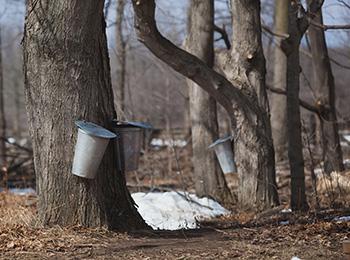 Maple Tree (Acer saccharum) have dark brown furrowed bark, small, winged fruits, and narrow reddish-brown twigs. Maple trees commonly have green-lobed leaves that change their color to red, yellow, orange, and dark burgundy in the fall. Maple trees’ sweet sap can be tapped for the classic Maple syrup you add to your pancakes. Maple trees grow in hardiness zones 4-9.
Maple Tree (Acer saccharum) have dark brown furrowed bark, small, winged fruits, and narrow reddish-brown twigs. Maple trees commonly have green-lobed leaves that change their color to red, yellow, orange, and dark burgundy in the fall. Maple trees’ sweet sap can be tapped for the classic Maple syrup you add to your pancakes. Maple trees grow in hardiness zones 4-9.
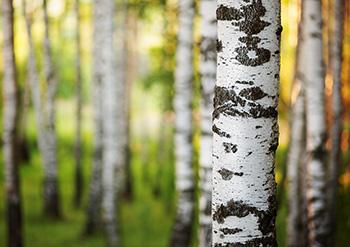 Birch Tree (Betula papyrifera) can be recognized by their peeling bark that can be white, gray, or yellow. You will also notice horizontal diamond-shaped raised marks on the light-colored bark. Birch leaves are typically triangular with jagged-looking edges. Birch trees can be tapped as well for there sap to make birch syrup or birch beer. Birch trees can be found in hardiness zones 3-9.
Birch Tree (Betula papyrifera) can be recognized by their peeling bark that can be white, gray, or yellow. You will also notice horizontal diamond-shaped raised marks on the light-colored bark. Birch leaves are typically triangular with jagged-looking edges. Birch trees can be tapped as well for there sap to make birch syrup or birch beer. Birch trees can be found in hardiness zones 3-9.
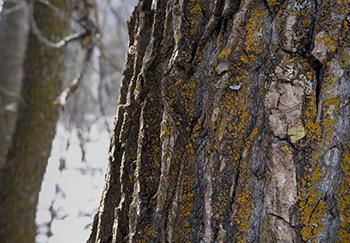 Cottonwood (Populus deltoides) leaves are alternate and triangular, growing on flattened leafstalks. Their bark is yellowish-green and smooth on young trees but grayish-brown and deeply furrowed with scaly ridges in maturity.
Cottonwood (Populus deltoides) leaves are alternate and triangular, growing on flattened leafstalks. Their bark is yellowish-green and smooth on young trees but grayish-brown and deeply furrowed with scaly ridges in maturity.
In warmer climates, you can collect the buds of the Cottonwood in December to create a salve or tincture with Aspirin-like fever-reducing and pain-relieving qualities.
Cottonwood grows in hardiness zones 2-9.
Australia lies in Plant Hardiness Zones 7 through 12 with some variations across regions and seasons. The caveat with foraging in Australia is that it is completely illegal without a permit except for private properties in some places. Without the 104$ permit, you can be fined anywhere from 10,000 to 110,000 dollars depending on where you foraged. If you have a license or are on your land you can forage freely.
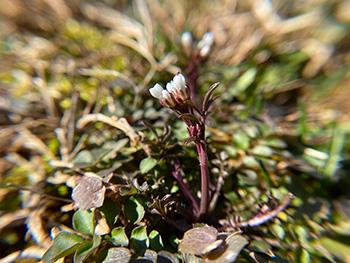 Hairy bittercress (Cardamine hirsuta) are rounded, hairy on the surface, and form on long petioles. The weed’s first 2 true leaves are kidney- to heart-shaped. The subsequent leaves that emerge on the plant have 2-4 pairs of alternate leaflets and a larger terminal leaflet. The plant is a great addition to a salad with its peppery taste. Hairy bittercress grows in hardiness zones 4-8.
Hairy bittercress (Cardamine hirsuta) are rounded, hairy on the surface, and form on long petioles. The weed’s first 2 true leaves are kidney- to heart-shaped. The subsequent leaves that emerge on the plant have 2-4 pairs of alternate leaflets and a larger terminal leaflet. The plant is a great addition to a salad with its peppery taste. Hairy bittercress grows in hardiness zones 4-8.
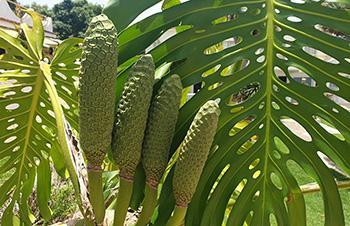 Monstera (Monstera deliciosa) will grow up to 66 feet tall by climbing up the trunk of a tree in the wild. It grows big, glossy, green leaves that can grow up to 3 feet long. The leaves grow holes or split called fenestrations on mature plants, a trait common to Monstera varieties. Monstera deliciosa gets its name from the delicious fruit it produces.
Monstera (Monstera deliciosa) will grow up to 66 feet tall by climbing up the trunk of a tree in the wild. It grows big, glossy, green leaves that can grow up to 3 feet long. The leaves grow holes or split called fenestrations on mature plants, a trait common to Monstera varieties. Monstera deliciosa gets its name from the delicious fruit it produces.
The fruit looks like a mix of a snake and a banana. It is toxic till ripe when the scales fall off. Monstera Deliciosa grows in hardiness zones 10-12.
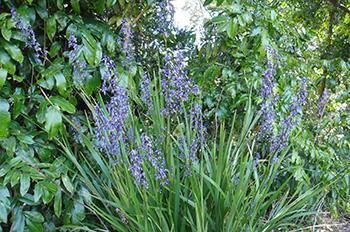 Dianella (Dianella caerulea) is a strappy herbaceous fruit bearing plant about 3 ft high, with a thick spreading rhizome under the ground.
Dianella (Dianella caerulea) is a strappy herbaceous fruit bearing plant about 3 ft high, with a thick spreading rhizome under the ground.
The bright green leaves have straight or toothed margins, and may reach 30 in length. Dark blue to purple berries are edible when ripe.
Berries are sweet and juicy. It can be eaten raw and is a great addition to fruit salad. Dianella grows in hardiness zones 8-11.
Now you’re ready to head out to the woods and pick some wonderful plants. Share some medicinal teas with your family to get over that winter cold or add a fun treat to the dinner table for the Holiday table.
Let us know what are your favorites to forage this time of year in the comments!
10 Natural Remedies You Can Only Make This Winter
How to Make Bark Bread from a Tree That Grows on Almost Every Street in America (Video)
5 Winter Herbs To Cut Belly Fat
How to Identify the Ginkgo Biloba Tree: Does It Grow on Your Street?

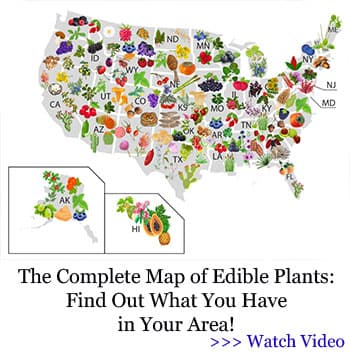
Is the spruce tree any use for medicinal purposes?
Spruce gum.
i’ve seen native americans use spruce for a poultice to prevent infections.
May have been Balsam Fir for the poultice.
Spruce, like pine, has anti-viral compounds and has been used to treat flu and coronaviruses. Spruce tea is better tasting, in my opinion, than pine needle tea.
What area of the world are the foraging calendars for?
Mostly the Eastern US.. Several of these are only in Puerto Rico or Florida according to https://plants.usda.gov … as far as the US is concerned.. 6 of them are in my area (SW Oregon).. We’ve just started getting real rain, so mushrooms (edible and medicinal) are all over.. and winter winds so the usnea (medicinal) is blowing down off the oaks and maples.. First freeze so first year biannual thistle, dock, and other roots (edible) can be harvested.. Also the bigleaf maples can be tapped and made into sugar similar to the sugar maples tho not as prolific… there are a number of leafy greens that have so far survived a couple of freezing nights. but the foraging will vary as to varieties and timing is concerned even in areas generally close to each other..
This series of foraging calendars are just an ‘intro’ so to speak. Your best bet is finding foragers local to where ever you are.. like there are several Pacific NW foraging groups in fb, Craig’s List, Meet Up, etc. also if there are any native flora groups around universities.. or give your general area and people here may be able to give you ideas. check back as more people comment..
Hello Patti,
The USDA Hardiness zone Map is an attempt to divide the country into zones that give us some idea whether certain plants can be grown in any given area. You can access it here: https://planthardiness.ars.usda.gov/
The primary piece of data used to delineate the zones is the average annual winter temperature experienced in that area. This could just be a list of forageables, but the temperature varies so much across the USA.
Many blessings and good health
are you able to add content that we can use in Canada? That would be awesome!! Thank you for sharing all your knowledge.
Hello Sue,
Thank you for your feedback. It is very important to us and I promise we will put it to good use!
Unfortunately, we cannot always include all the information in such a short article., but we will do our best to include more Canada forageables in future articles.
Many blessings and good health!
Is there anything for new Zealand
Hello Re,
Thank you so much for bringing this to our attention.
Your feedback is very important to us. It means that we can understand what we are doing well and whether there are areas where we need to make improvements.
I’m afraid we can’t cover all countries in such a short article, but we will try to discuss the New Zealand forageables in future foraging calendars.
Many blessings and good health!
How about a calender for the Southern hemisphere
Hello Gary,
Thank you for your feedback. It is very important to us and I promise we will put it to good use!
Unfortunately, we cannot always include all the information in such a short article., but we will do our best to include more Southern forageables in future calendars.
Many blessings and good health!
doesn’t Birch have edible inner bark as well?
Wht about any edible mushrooms this time of year in zone 5?
Hello Red,
Yes, that’s correct. The inner bark of birch trees is edible.
Some of the edible mushrooms you can forage this time of the year include Oyster mushrooms, Brick caps, and others.
Many blessings and good health!
How do I find out what zone I am in?
Hi from Australia. Love getting your emails, I am only just getting into the healing world of herbs and starting my own medicine garden . Totally enjoy your updates and knowledge. Thank you Sharon